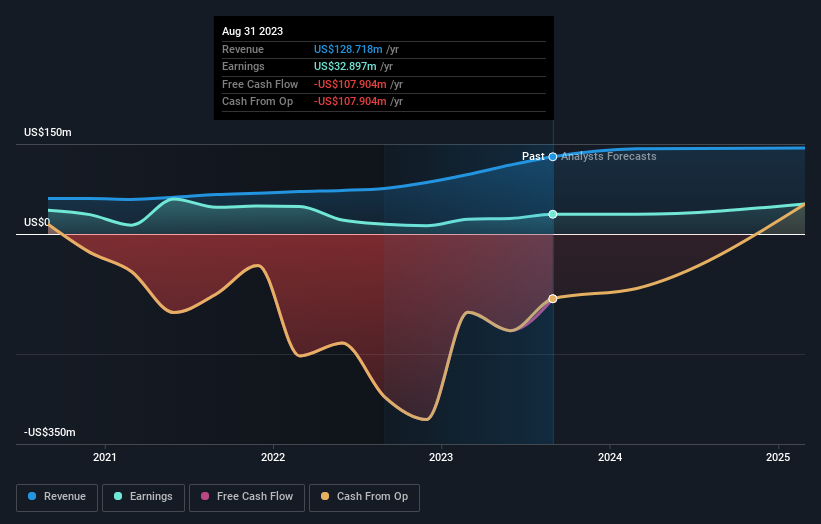Investing in Saratoga Investment (NYSE:SAR) five years ago would have delivered you a 105% gain
The main point of investing for the long term is to make money. Better yet, you'd like to see the share price move up more than the market average. But Saratoga Investment Corp. (NYSE:SAR) has fallen short of that second goal, with a share price rise of 36% over five years, which is below the market return. Meanwhile, the last twelve months saw the share price rise 2.4%.
Now it's worth having a look at the company's fundamentals too, because that will help us determine if the long term shareholder return has matched the performance of the underlying business.
See our latest analysis for Saratoga Investment
While markets are a powerful pricing mechanism, share prices reflect investor sentiment, not just underlying business performance. By comparing earnings per share (EPS) and share price changes over time, we can get a feel for how investor attitudes to a company have morphed over time.
Saratoga Investment's earnings per share are down 1.0% per year, despite strong share price performance over five years.
By glancing at these numbers, we'd posit that the decline in earnings per share is not representative of how the business has changed over the years. Since the change in EPS doesn't seem to correlate with the change in share price, it's worth taking a look at other metrics.
In fact, the dividend has increased over time, which is a positive. It could be that the company is reaching maturity and dividend investors are buying for the yield. We'd posit that the revenue growth over the last five years, of 19% per year, would encourage people to invest.
The image below shows how earnings and revenue have tracked over time (if you click on the image you can see greater detail).
We know that Saratoga Investment has improved its bottom line lately, but what does the future have in store? If you are thinking of buying or selling Saratoga Investment stock, you should check out this free report showing analyst profit forecasts.
What About Dividends?
It is important to consider the total shareholder return, as well as the share price return, for any given stock. Whereas the share price return only reflects the change in the share price, the TSR includes the value of dividends (assuming they were reinvested) and the benefit of any discounted capital raising or spin-off. Arguably, the TSR gives a more comprehensive picture of the return generated by a stock. As it happens, Saratoga Investment's TSR for the last 5 years was 105%, which exceeds the share price return mentioned earlier. This is largely a result of its dividend payments!
A Different Perspective
Saratoga Investment provided a TSR of 14% over the last twelve months. But that was short of the market average. On the bright side, the longer term returns (running at about 15% a year, over half a decade) look better. It may well be that this is a business worth popping on the watching, given the continuing positive reception, over time, from the market. It's always interesting to track share price performance over the longer term. But to understand Saratoga Investment better, we need to consider many other factors. For example, we've discovered 4 warning signs for Saratoga Investment (2 are concerning!) that you should be aware of before investing here.
We will like Saratoga Investment better if we see some big insider buys. While we wait, check out this free list of growing companies with considerable, recent, insider buying.
Please note, the market returns quoted in this article reflect the market weighted average returns of stocks that currently trade on American exchanges.
Have feedback on this article? Concerned about the content? Get in touch with us directly. Alternatively, email editorial-team (at) simplywallst.com.
This article by Simply Wall St is general in nature. We provide commentary based on historical data and analyst forecasts only using an unbiased methodology and our articles are not intended to be financial advice. It does not constitute a recommendation to buy or sell any stock, and does not take account of your objectives, or your financial situation. We aim to bring you long-term focused analysis driven by fundamental data. Note that our analysis may not factor in the latest price-sensitive company announcements or qualitative material. Simply Wall St has no position in any stocks mentioned.

